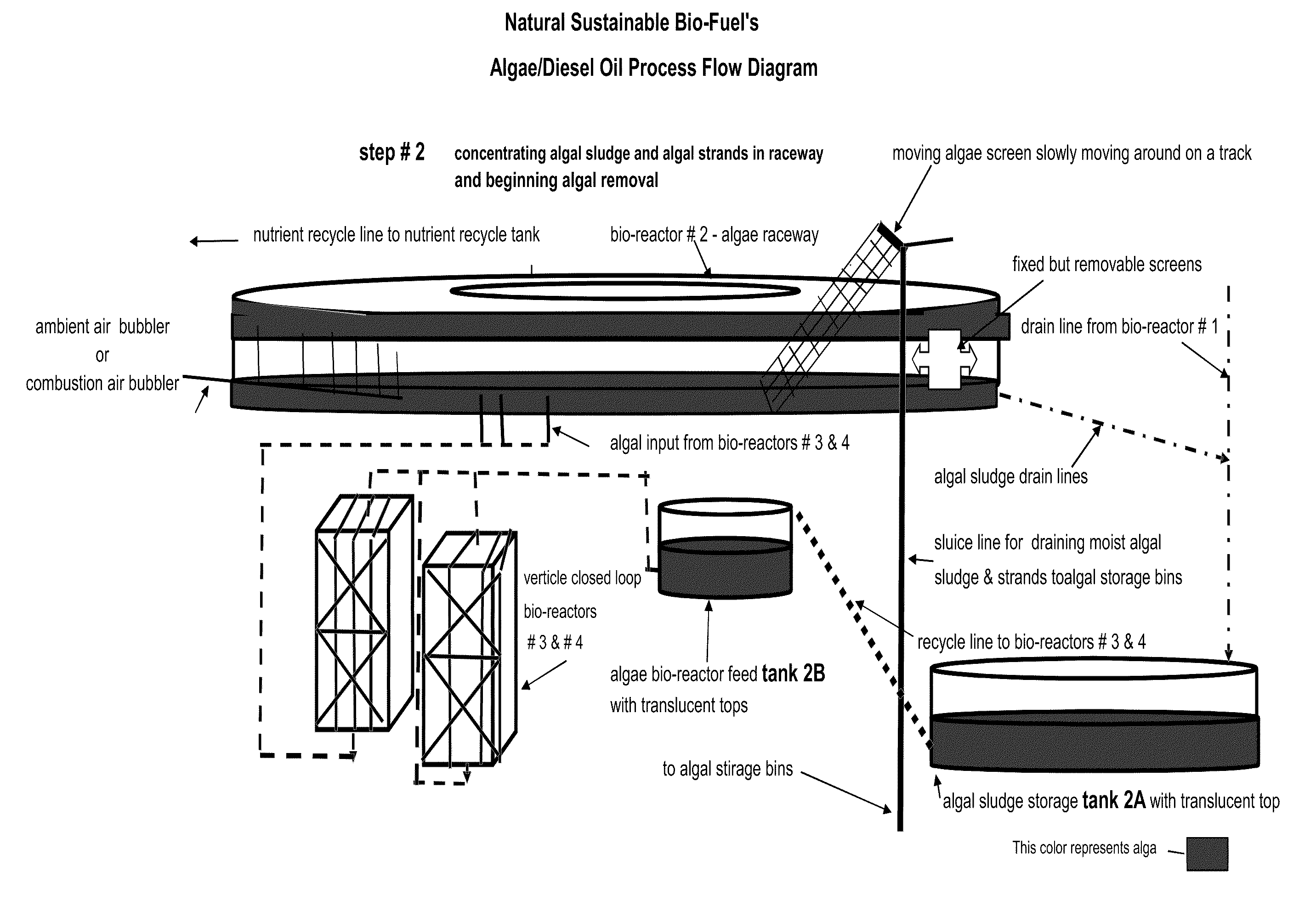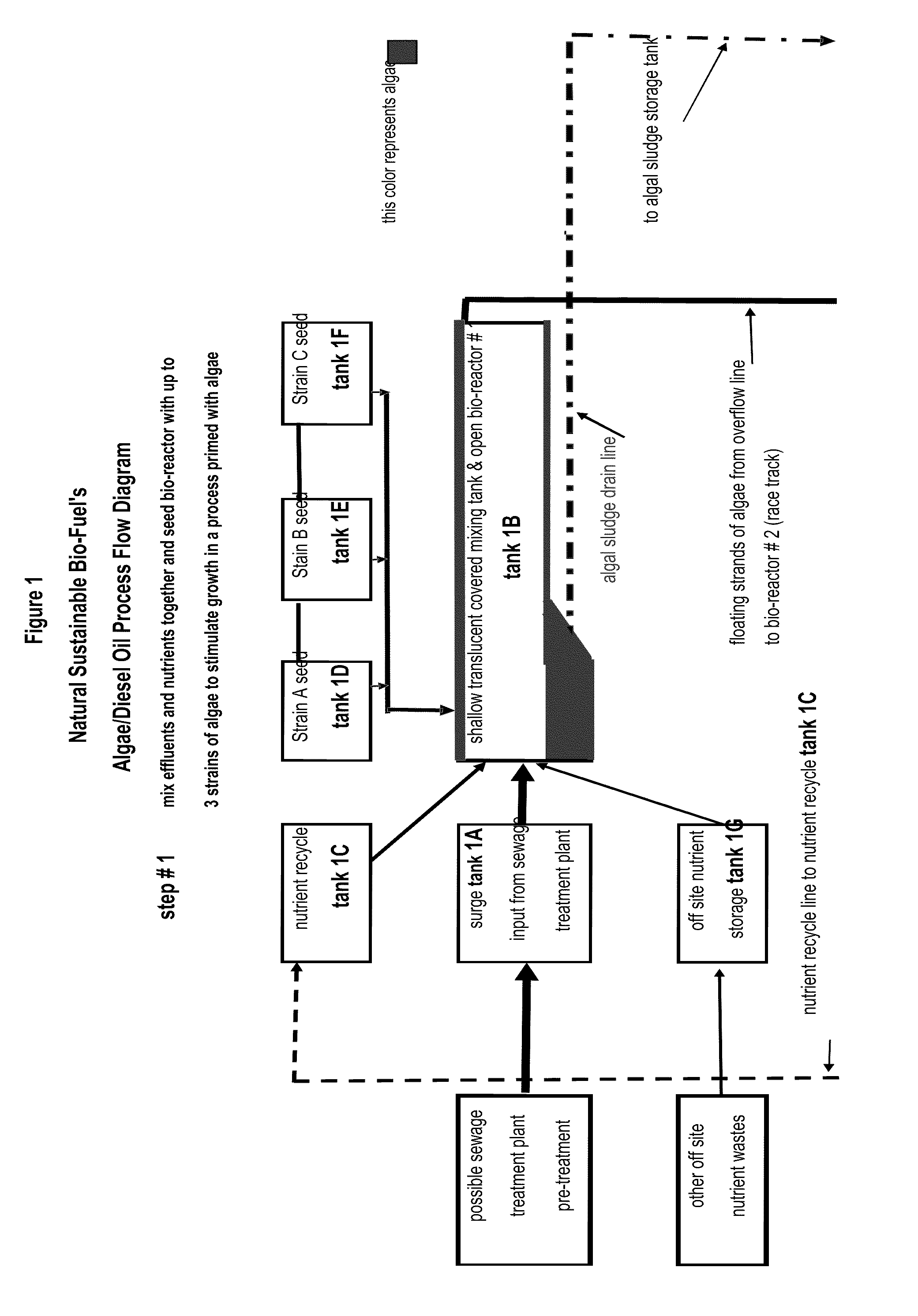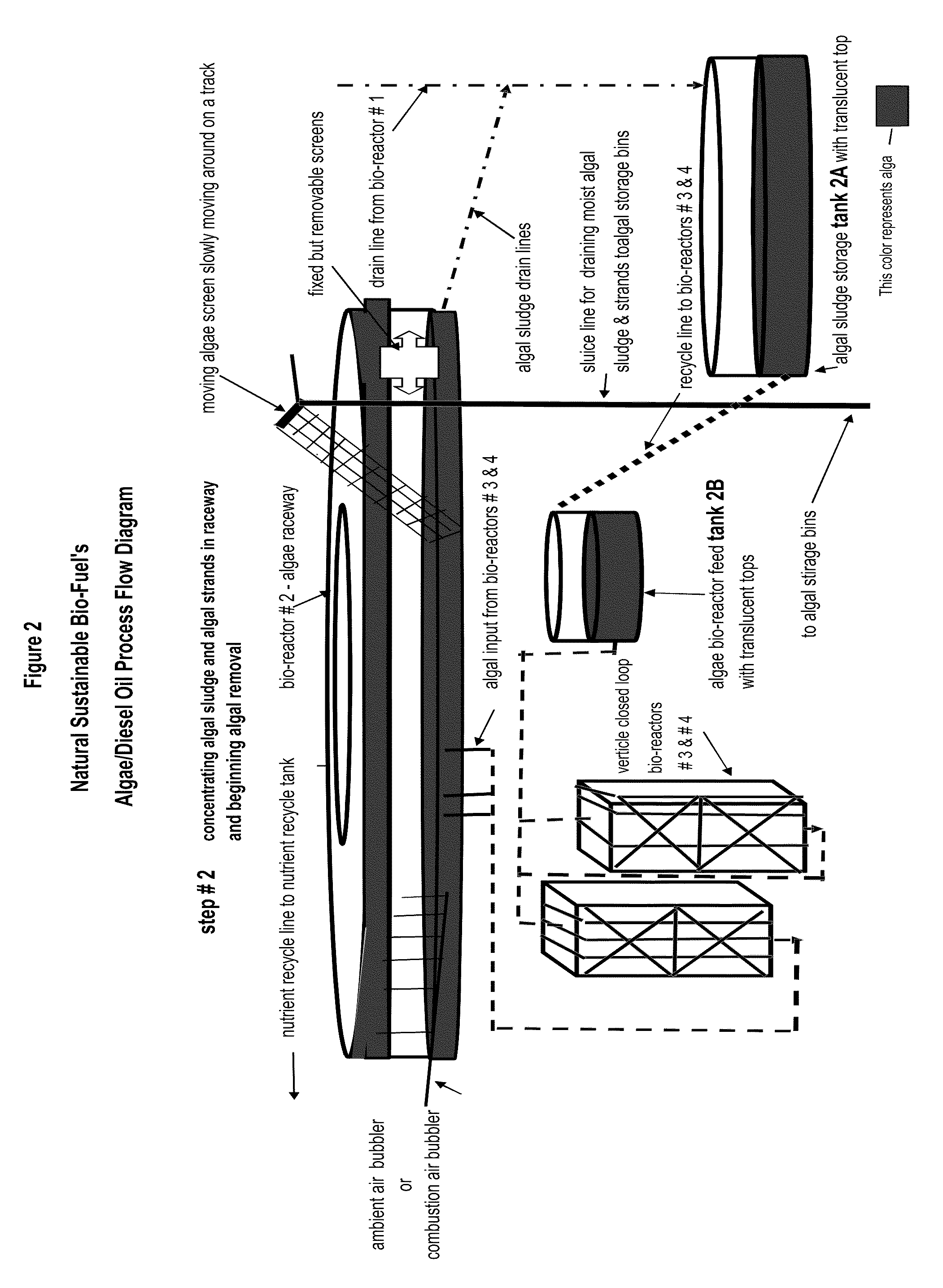Maximizing utilization of municipal sewage treatment effluents to produce a biofuel, fertilizer and/or animal feed for environmentally sustainable minded communities
a technology of municipal sewage and effluent, applied in biofuels, agriculture, fuels, etc., can solve the problems of reducing the efficiency of municipal sewage treatment, robbery of oxygen from the water, and affecting the health of aquatic organisms in natural water bodies, so as to achieve the effect of quick growth
- Summary
- Abstract
- Description
- Claims
- Application Information
AI Technical Summary
Benefits of technology
Problems solved by technology
Method used
Image
Examples
Embodiment Construction
[0029]The invention disclosed converts certain primary and secondary sewage treatment plant side streams and effluents into bio-diesel fuels, fertilizer and animal feed and, at the same time, solves the problem of emitting nitrogen, and phosphorous in the water effluents from the sewage treatment facility. In the invention, algae is injected into a mixture of sewage effluent streams which causes the algae to grow rapidly in a carefully selected and designed set of four or more photo bio reactors. These are carried out under carefully controlled conditions of temperature, light, flow rate, levels of nutrients and use of recycled water. The algae cells are collected at preset times and the oils and fats in the algae cells are pressed out by mechanical means and collected in a storage tank for use as a bio-diesel fuel in place of refined oils.
[0030]Referring to FIG. 1, selected sewage streams are fed through a pipe from the sewage treatment plant to a receiving surge tank 1A in the alg...
PUM
 Login to View More
Login to View More Abstract
Description
Claims
Application Information
 Login to View More
Login to View More - R&D
- Intellectual Property
- Life Sciences
- Materials
- Tech Scout
- Unparalleled Data Quality
- Higher Quality Content
- 60% Fewer Hallucinations
Browse by: Latest US Patents, China's latest patents, Technical Efficacy Thesaurus, Application Domain, Technology Topic, Popular Technical Reports.
© 2025 PatSnap. All rights reserved.Legal|Privacy policy|Modern Slavery Act Transparency Statement|Sitemap|About US| Contact US: help@patsnap.com



